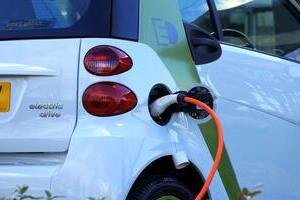As a result of bringing forward the ban of selling new petrol, diesel or hybrid cars from 2040 to 2030, as part of the UK Government’s ‘Road to Zero Strategy,’ the pressure is on for all governments to meet Electric Vehicle (EV) targets.
In order to achieve maximum and efficient use of EV chargepoints, it’s important to consider how they can be managed to overcome operational challenges created by increasing demand, and mitigate against misuse which arises from user behaviours.
New operational models based on data will potentially unlock valuable insights into how EV chargepoint infrastructure is used, and how it can be significantly improved to meet demand. Nick Sacke, head of IoT solutions at Comms365, outlines the challenges currently facing the EV chargepoint sector and how these can be mitigated through the efficient gathering, analysis and use of data.
Operational challenges
The operational challenges of EV chargepoint network infrastructure are not only related to the number of chargepoints available, but also how they are used. There are two particular behaviours that interfere with the effective use of EV infrastructure ‘ICEing’ and ‘hogging’.
ICEing is where an internal combustion (IC) vehicle is parked within an EV bay, therefore, preventing it from being available for EV users. Whereas hogging is where an EV vehicle is being used and charged in the bay, but the space is kept occupied for longer than it should.
These situations will only become more common once the usage and demand increases for electric vehicles each year up to when the new IC vehicle ban comes into place in 2030. This is adding enormous pressure on governments to not only encourage use of EV vehicles, but to make sure that the public charging infrastructure is in place to refuel vehicles as efficiently and easily as possible.
Profiling usage and behaviours
To overcome these infrastructure challenges, local authorities and governments are looking at profiling what happens within the EV infrastructure, including monitoring the percentage of utilisation and the time of the day it’s used.

While the functionality of EV chargers is increasing, arguably this is not as important as helping users to easily locate and use them. Users must be able to quickly navigate to their nearest chargepoint, and also identify whether any chargers are available.
For example, there could be a sign outside a car park which states that all four chargers are busy, but one unit will be available in five minutes. This creates a similar environment to that of a petrol station, where drivers don’t mind sitting in a queue if they can see the pump ahead will shortly become free. Cultural mirroring must be considered for the use of EV to boost adoption.
Data collection and analysis
Currently, data rests in silos, meaning the data is controlled by the chargepoint network operator (CPNO). There is now growing pressure to make chargepoint datasets available to be shared through industry standard protocols (OCPP and OCPI) to provide a fertile ground in which to grow new operational policies and allow the chargepoint network to operate more effectively. The gathering, sharing and analysis of this chargepoint data, together with Internet of Things (IoT) and other data sources, will identify trends, behaviours and challenges, streamline processes and make the most efficient use of information.
EV infrastructure may not work if stakeholders don’t collect, analyse and share their data effectively, contributing to a wider collaboration by integrating all the information together. Pinch points and problems will appear, but with access to the right information, the data can help create answers to the problems.
New initiatives
Beyond access to EV chargepoints, what other needs will users have? What about the disabled driver? Having access to the information about who the driver is opens up possibilities for implementing a network of disabled EV bays to direct the individual to.
A disabled EV bay is not going to be the same as an ordinary EV bay; the charger will have a different design, and the individual will have certain needs to be met such as space around the charger to manoeuvre wheelchairs.
There is also the possibility of incentivising EVs further with dynamic charging plans where prices reflect electricity grid load and are dependent on the time of the day. If you’re charging at night on a public charger, should you pay less? And if it’s a peak period or location, should you pay more? The opportunities are endless but only with the right data collected to provide meaningful insight.
Conclusion

Nick Sacke
It’s in all stakeholders’ interests to make EV infrastructure and the charging experience as streamlined, user friendly as possible. If it appears too difficult or challenging, and if users don’t know where chargepoints are, then people may not adopt EV en masse.
However, by deploying technology solutions including IoT EV bay monitoring to help make these processes more efficient, with real-time data flow and sharing at the core of the proposition, then those involved can benefit from improved transport networks ahead and prepare for the inevitable increased demand that will occur.
The author is Nick Sacke, head of IoT solutions at Comms365.
Comment on this article below or via Twitter: @IoTNow_OR @jcIoTnow










